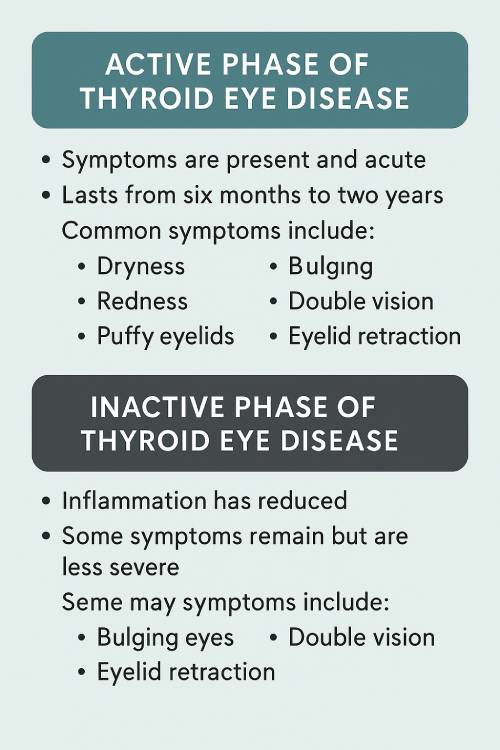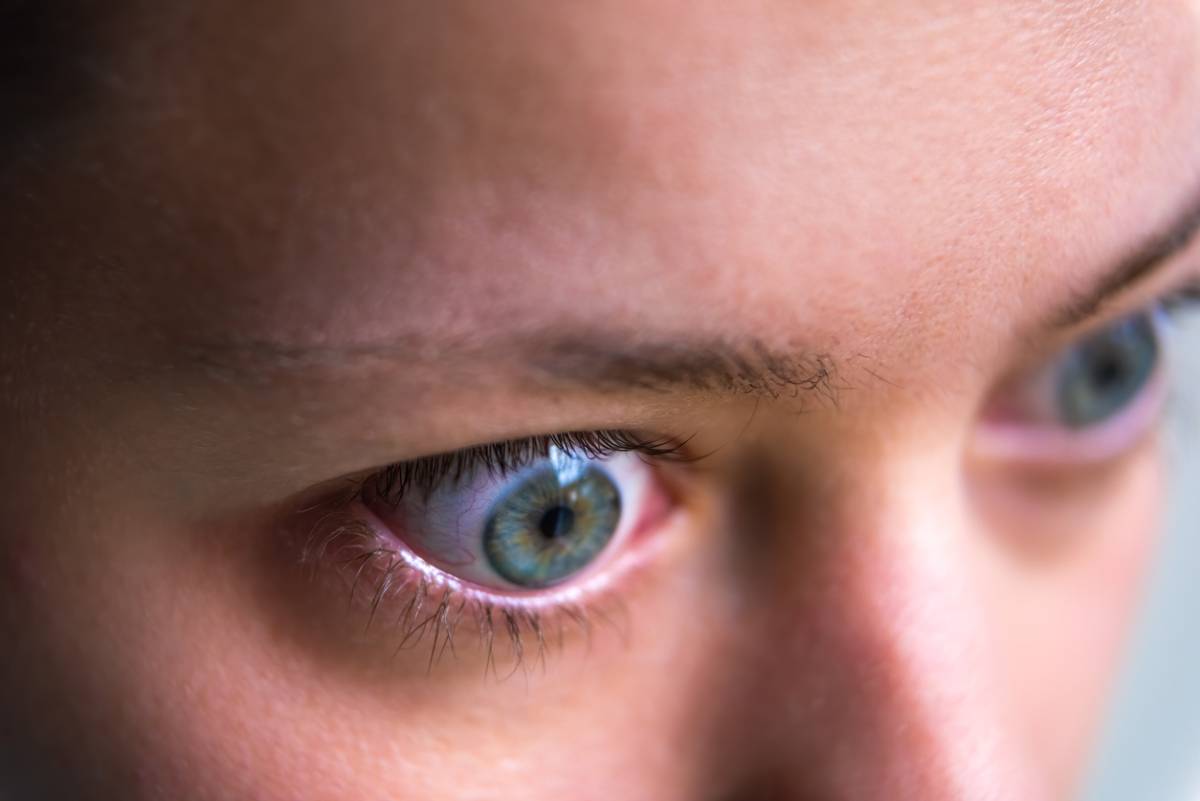Thyroid eye disease is a rare autoimmune condition. It impacts the tissue around the eyes, which can affect their function and appearance. The condition can cause several unwanted symptoms that make daily life difficult. This is due to the inflammation and swelling in the tissue surrounding the eyes. Common symptoms include eye bulging, dryness, double vision, and discomfort. Symptoms range from mild to severe. If left untreated, the condition can cause permanent vision loss. You may wonder, can thyroid eye disease be cured? Below, you will find helpful information about the condition.
Can Thyroid Eye Disease Be Cured?
There is no cure for thyroid eye disease. However, there are several treatment options to effectively manage the condition. The first step in managing thyroid eye disease is to consult with a medical professional skilled in thyroid eye disease. The type of treatment that is right for you depends on your symptoms and the severity of the condition. In many cases, addressing the condition involves a combination of treatment options. After a thorough review of your condition, a customized treatment plan is created. Below are some of the most effective treatment options.
Lifestyle Changes
Several lifestyle changes can help alleviate symptoms associated with the condition. Lifestyle changes are done in conjunction with other treatment methods. Consult with a thyroid eye disease expert to see if these options are right for you.
Avoid Smoking
Smoking is extremely harmful to your health. It is especially harmful to those with thyroid eye disease. Research shows that smokers are seven times more likely to develop severe symptoms as compared to non-smokers. Smoking reduces oxygen delivery to tissues and increases inflammation. It can also interfere with the effectiveness of your thyroid eye disease medications.
Consume an Autoimmune-Friendly Diet
Thyroid eye disease is a rare autoimmune condition that causes inflammation. Eating an anti-inflammatory diet can help with your body’s immune response. This includes a diet rich in fruits, vegetables, lean proteins, and healthy fats. The diet also involves cutting out certain foods. This includes gluten, dairy, refined sugar, and processed goods. The anti-inflammatory diet is not a replacement for treatment. It is necessary to combine it with a fully customized treatment plan curated by a professional specializing in thyroid eye disease. However, it is highly beneficial in conjunction with your treatment plan.
Take Certain Supplements
Certain supplements can improve the condition. These supplements are combined with a customized treatment plan by a medical professional. Before taking supplements, consult with a medical professional. It has been demonstrated that individuals deficient in vitamin D can benefit from supplementation. Sun exposure can also be beneficial. Restoring normal vitamin D levels can support immune function and reduce inflammation. Selenium is a beneficial supplement for those with mild thyroid eye disease. It may aid in reducing inflammation and slowing disease progression.
Medication
Treatment for thyroid eye disease has advanced dramatically in the last few years. A new medication for thyroid eye disease was introduced in 2020. It revolutionized the treatment landscape for thyroid eye disease. The medication is administered intravenously. It effectively blocks a protein in the body called the IGF-1 receptor. This stops swelling and irritation behind the eyes. By stopping this, the medication effectively reduces or eliminates several unwanted symptoms. These include bulging eyes, double vision., swelling, redness, and pain. Many patients report an improvement in their overall quality of life after treatment.
Surgery
For many patients with the condition, surgical intervention is the most effective treatment option. It is an excellent way to enhance the appearance of the eyes. It can also eliminate the symptoms associated with the condition. In many cases, swelling, bulging, and tissue changes do not go away on their own. There are several surgical interventions available, depending on the patient’s needs. Orbital decompression surgery, eyelid surgery, and eye muscle surgery each address specific issues related to thyroid eye disease. A skilled oculofacial surgeon can assess your condition and provide a customized treatment plan tailored to your needs.
Understanding the Phases of Thyroid Eye Disease

Thyroid eye disease occurs in stages, including the active and inactive stages. Each stage is uniquely different. However, treatment is necessary throughout the entire process to ensure your long-term eye health.
Active Phase of Thyroid Eye Disease
The active phase of thyroid eye disease comes with symptoms that are present and acute. This phase can last from six months to two years and can impact one or both eyes. Each patient is uniquely different, so care from an experienced professional is key. Common symptoms in the active phase include dryness, itching, grittiness, light sensitivity, redness, double vision, misaligned vision, puffy eyelids, and eyelid retraction. Treatment is necessary during this phase. The type of treatment depends on the type and severity of the symptoms. The risks of avoiding treatment include vision loss and other serious complications.
Inactive Phase of Thyroid Eye Disease
The inactive phase of thyroid eye disease is referred to as the “stable phase” by medical professionals. However, this does not mean that you do not need continued treatment. The second phase of thyroid eye disease is characterized by many of these symptoms disappearing. Active inflammation also reduces during this phase. However, some symptoms are still present, which can impact the appearance and function of the eyes. This includes bulging eyes, double vision, and eyelid retraction. In many cases, this is the stage when surgical intervention is used to treat the condition.
Treating Thyroid Eye Disease
Thyroid eye disease is a rare autoimmune condition. It is often caused by Graves’ disease, an autoimmune disorder that causes the thyroid gland to overproduce thyroid hormones. This leads to hyperthyroidism and up to 50% of patients with Graves’ disease symptoms of thyroid eye disease. Patients experiencing symptoms of the disease require treatment. Early intervention is the best-case scenario to reduce the effects on your vision and eye health. Untreated thyroid eye disease can lead to long-term complications, including permanent vision loss.
If you think you have thyroid eye disease, contact Dr. Jennifer Mudock to schedule a consultation today!

